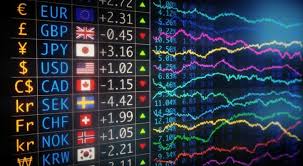
The Best Forex Trading Strategy: Unlocking Successful Trading
In the world of trading, finding a strategy that works for you can be challenging. With countless methods and approaches available, narrowing down the best forex trading strategy can seem daunting. However, there are fundamental principles that successful traders adhere to, which often leads them to profitability. In this article, we will explore various aspects of forex trading strategies, helping you in honing your own trading approach and directing you to the resources you need, such as best forex trading strategy https://forex-vietnam.net/.
Understanding Forex Trading Basics
Before delving into specific strategies, it’s vital to build a solid understanding of forex trading basics. Forex, or foreign exchange, represents the global marketplace for exchanging national currencies against one another. Unlike stock markets, forex operates 24 hours a day, five days a week, enabling traders to capitalize on price movements across various time zones.
The Importance of a Trading Plan
A successful trading strategy is built upon a well-thought-out trading plan. A trading plan serves as the foundation that guides your trading activities, outlining your goals, risk tolerance, and the criteria you will use to make trading decisions. This should include details such as the currency pairs you wish to trade, entry and exit strategies, and risk management measures.
Technical vs. Fundamental Analysis
Two primary forms of analysis dominate the forex trading landscape: technical and fundamental analysis. Each has its strengths and weaknesses and can be used independently or in conjunction with one another.
Technical Analysis
Technical analysis relies on historical price data and chart patterns to forecast future price movements. Traders analyze various indicators, such as moving averages, relative strength index (RSI), and Fibonacci retracements, to make informed decisions. The essence of technical analysis lies in the belief that historical price trends often repeat themselves.

Fundamental Analysis
In contrast, fundamental analysis considers the economic and political factors that influence currency values. Economic indicators such as inflation rates, employment figures, and interest rates are essential for assessing the strength or weakness of a currency. By understanding the fundamental aspects driving the market, traders can form a clearer picture of potential pricing movements.
Popular Forex Trading Strategies
Now that we’ve established the importance of a trading plan and different forms of analysis, let’s discuss some popular forex trading strategies that can enhance your performance in the marketplace.
1. Scalping
Scalping is a high-frequency trading strategy that seeks to capitalize on small price movements over short timeframes. Scalpers typically hold positions for a few seconds to a few minutes, executing multiple trades throughout a trading session. This strategy requires rapid decision-making and a strong understanding of market behavior.
2. Day Trading
Day trading involves opening and closing trades within the same day, allowing traders to avoid risks associated with overnight market movements. Successful day traders often mix technical analysis with fundamental factors to determine the best entry and exit points, employing stop-loss orders to manage risks effectively.
3. Swing Trading
Swing trading is a medium-term strategy that aims to capture price swings over a few days to weeks. Traders typically rely on technical analysis to identify potential reversal points and execute trades accordingly. This strategy allows for less stress compared to day trading, as it does not require constant monitoring of the markets.
4. Position Trading
Position trading is a long-term strategy that involves holding positions for weeks, months, or even years. This approach is based on fundamental analysis, with traders focusing on long-term trends rather than short-term price fluctuations. Patience is key with position trading, as traders must be willing to weather fluctuations and adjust positions as necessary.

Risk Management: The Unsung Hero
While having a robust trading strategy is essential, the power of effective risk management cannot be understated. No trader is immune to losses, and understanding how to manage risk is crucial for long-term success. Here are a few fundamental risk management techniques:
1. Set Stop-Loss Orders
Stop-loss orders are essential to limit potential losses. By establishing a predetermined exit point for your trades, you protect your investment from significant downturns.
2. Diversification
Diversifying your trading portfolio can help spread risk across multiple currency pairs. This approach minimizes the impact of a poor-performing trade, allowing gains from other trades to offset losses.
3. Use Leverage Wisely
While leverage can amplify profits, it can also exacerbate losses. Understanding how to use leverage responsibly is crucial; never risk more than you can afford to lose.
Continuous Learning and Adaptation
The forex market is ever-evolving, and successful traders must be willing to adapt their strategies. Staying informed about market trends, economic news, and trading techniques through educational resources and practice is vital to improving your trading skills.
Conclusion
Finding the best forex trading strategy is a personal journey that requires experimentation and a solid understanding of market principles. By creating a detailed trading plan, understanding both technical and fundamental analysis, and implementing effective risk management measures, you can position yourself for success in the forex market. Remember that trading is a skill that develops over time, and continuous learning is the key to unlocking your potential as a trader.
Leave a Reply